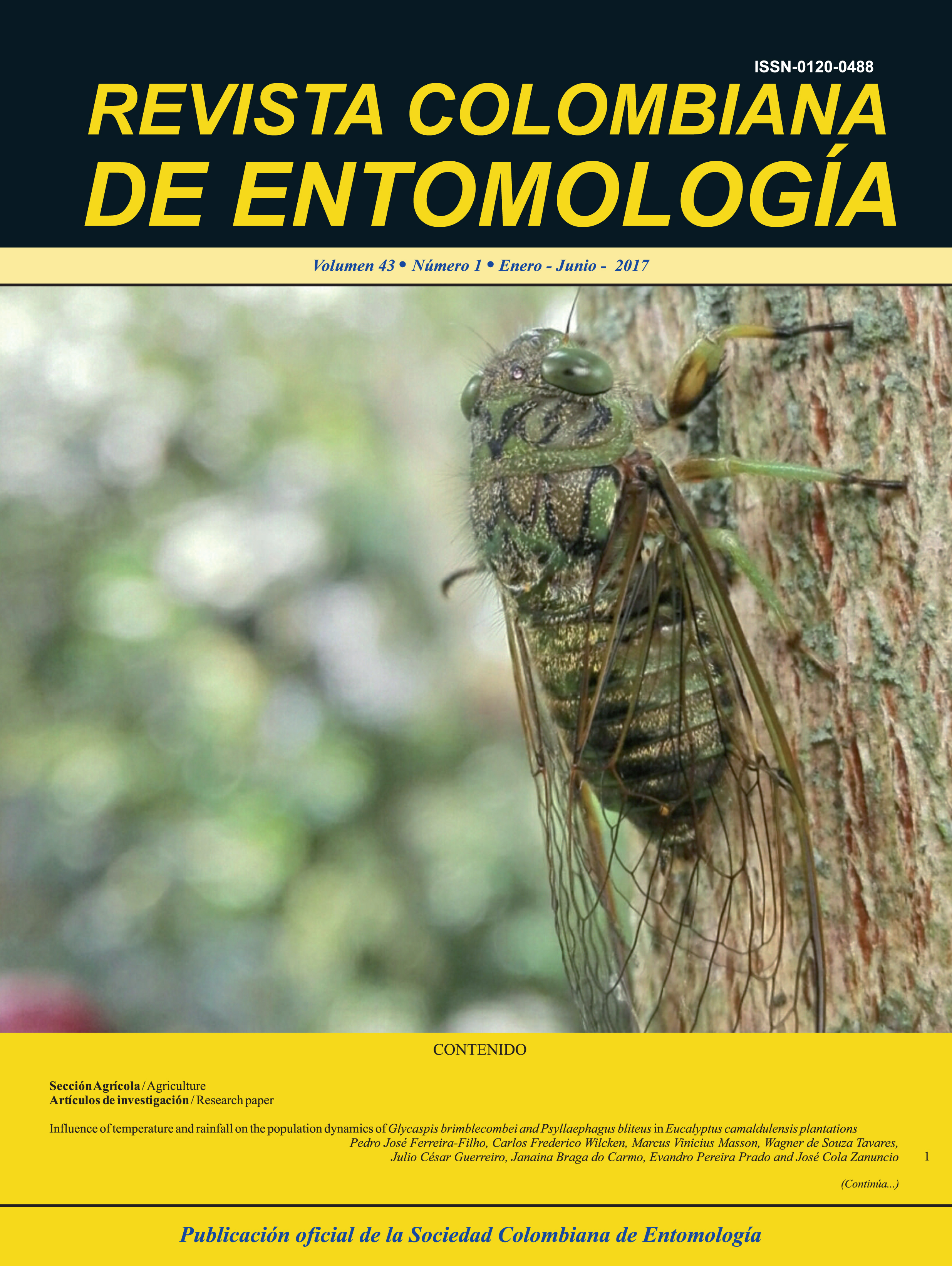Effect of insecticides on Liriomyza sativae (Diptera: Agromyzidae) and its parasitoids in bean, Phaseolus vulgaris
Keywords:
Leafminer, Unbalance, WaspsMain Article Content
Liriomyza sativae a notoriously polyphagous leafminer species, is one of the main causes of insecticide applications in the bean, Phaseolus vulgaris in Ecuador. However, there are several species of parasitoids associated with this insect which generally regulate its populations when there is no interference due to insecticide applications. Two studies in “El Misionero” Experimental Center, Guayas, Ecuador, where conducted in order to evaluate the importance of natural biological control by these parasitoids. In one of them, the population fluctuation of L. sativae and the incidence of its parasitoids were assessed on an insecticide free plot. In the other, the same factors were assessed in a field experiment comparing two treatments: 1. without insecticide applications and 2. with weekly applications of a commercial formulation of lambda cihalotrin + thiametoxam. Diversity of parasitoids associated with this leaf miner were observed in both cases. In the first study, low infestation (1.8 mines.leaflet-1) and high percentage of parasitism in mines (70.5 %) were observed. In the experiment the general averages of active larvae and percentages of parasitism resulted 11.8 ± 2.9 and 23.3 ± 5.0 % vs. 3.1 ± 0.8 and 61.8 ± 7.7 % for treated and untreated plants respectively. Three species of larval parasitoids, Closterocerus sp., Chrysocharis sp. and Neochrysocharis sp. (Hymenoptera: Eulophidae) and the larva-puparium parasitoid Ganaspidium sp. (Hymenoptera: Figitidae) were detected. The results show the importance of parasitoids as regulators of L. sativae populations and the interference on natural biological controls by the indiscriminate applications of insecticides.
Downloads

This work is licensed under a Creative Commons Attribution-NonCommercial-ShareAlike 4.0 International License.
Authors retain the copyright on their work and are responsible for the ideas expressed in them. Once a manuscript is approved for publication, authors are asked for a publication license for the term of legal protection, for all territories that allows the use, dissemination and disclosure of the same.

